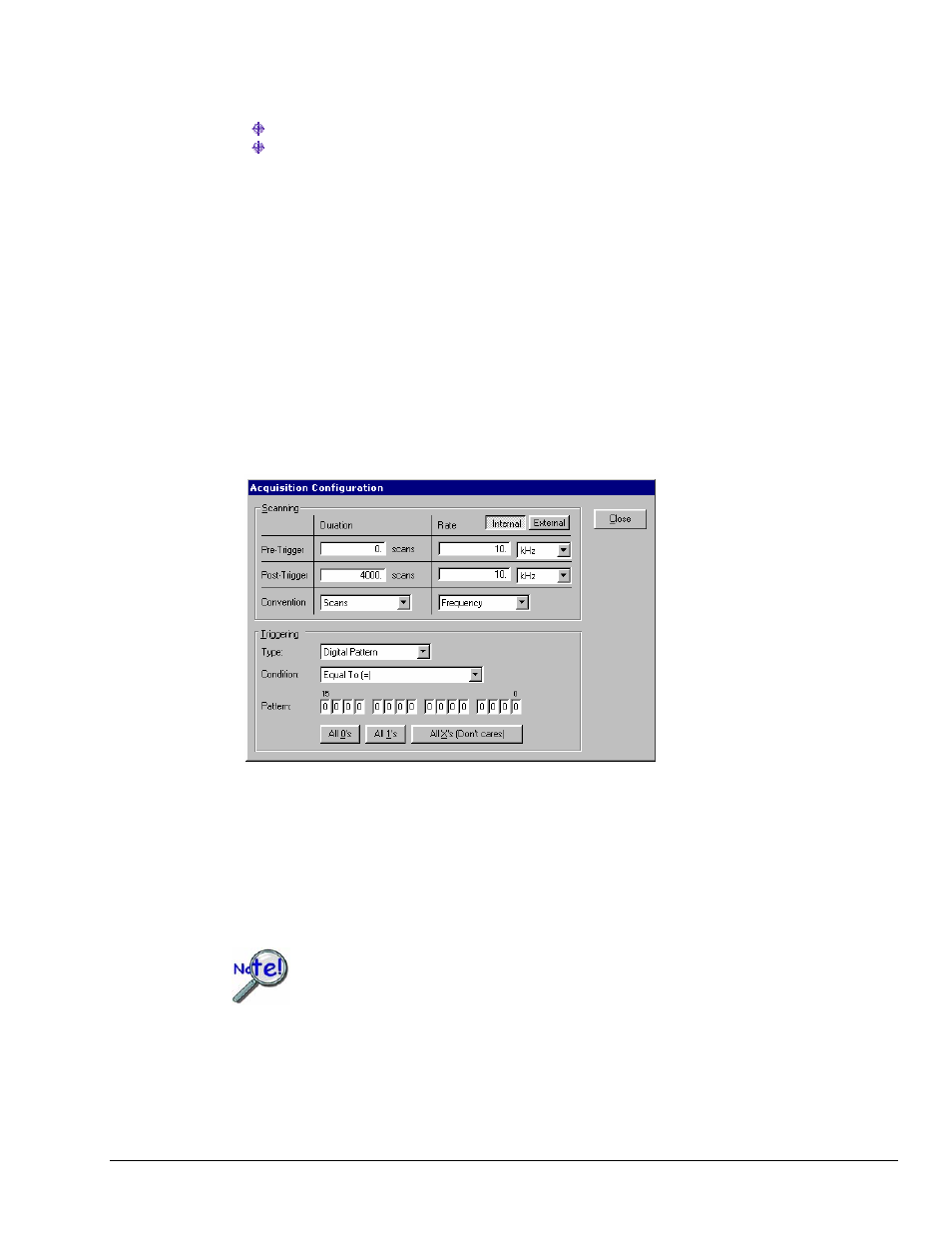Digital-pattern trigger, External clock and counter-timer – Measurement Computing WaveBook rev.5.3 User Manual
Page 91

The red horizontal line (Threshold) and blue vertical lines (defining maximum width) will vary according
to the parameter settings. You can specify either one or two thresholds for the level and width settings.
The number of labels matches the number of thresholds and the placement follows the polarity.
For positive polarity, the text is “Rise Above... Stay Below.”
For negative polarity, the text is “Fall Below and Stay Above.”
Note: When used as a maximum, the pulse width setting can capture signal pulses.
As a minimum, it is useful for ignoring pulses.
Digital-Pattern Trigger
This type of trigger is useful when trying to capture noise, vibrations or some other physical disturbance
that occurs at a particular point in a digitally-sequenced process, such as a relay-logic-control system.
When “Digital Pattern” is selected as the Triggering Type, the 16-bit pattern extension appears (as
indicated in the following figure). The Condition box allows the following choices:
Equal To (=) / Not Equal To (< >) – These options treat each digital line as a separate input to be
compared to logical 1 or 0. Selecting “Equal To” triggers only on the exact pattern of 1’s and 0’s selected.,
while “Not Equal” triggers on all others. You can also set any of the inputs to “don’t care” (X), which
excludes it from the comparison.
Greater Than (>) / Less Than (<) – These options interpret the digital inputs as a single 16-bit value and
allow a threshold trigger.
Acquisition Configuration Dialog Box, with Digital Pattern Extensions
External Clock and Counter-Timer
Note:
The Internal and External buttons located in the rate section of the screen (previous and following
figures) are used to select Internal Clock or External Clock, respectively.
The external clock is useful when data collection depends on rotational speed or axial position. By
synchronizing the system with an external event for correlation of data, you can collect event-dependent
data instead of time-dependent data.
Make sure to adhere to the minimum slew rate requirement of 20 v/µs.
WaveBook can receive an external clock input through pin 20 of the DB25 connector labeled DIGITAL
I/O, EXTERNAL CLOCK, TTL TRIGGER. This enables data scanning to be correlated with an external
pulse train. To enable the external clock, select “External” for the Scanning Rate in the Acquisition
Configuration Dialog Box (see following screen shot). When the external clock is enabled, the WaveBook
begins a scan only after a rising edge on the TTL level occurs. Optionally, the external clock may be
divided [by a factor of 1 to 255]. This “pre-scaling” allows the user to select a reduced scan rate.
WaveBook/512A, /516, /516A , /516E
897895
WaveBook Operation Reference 4-21